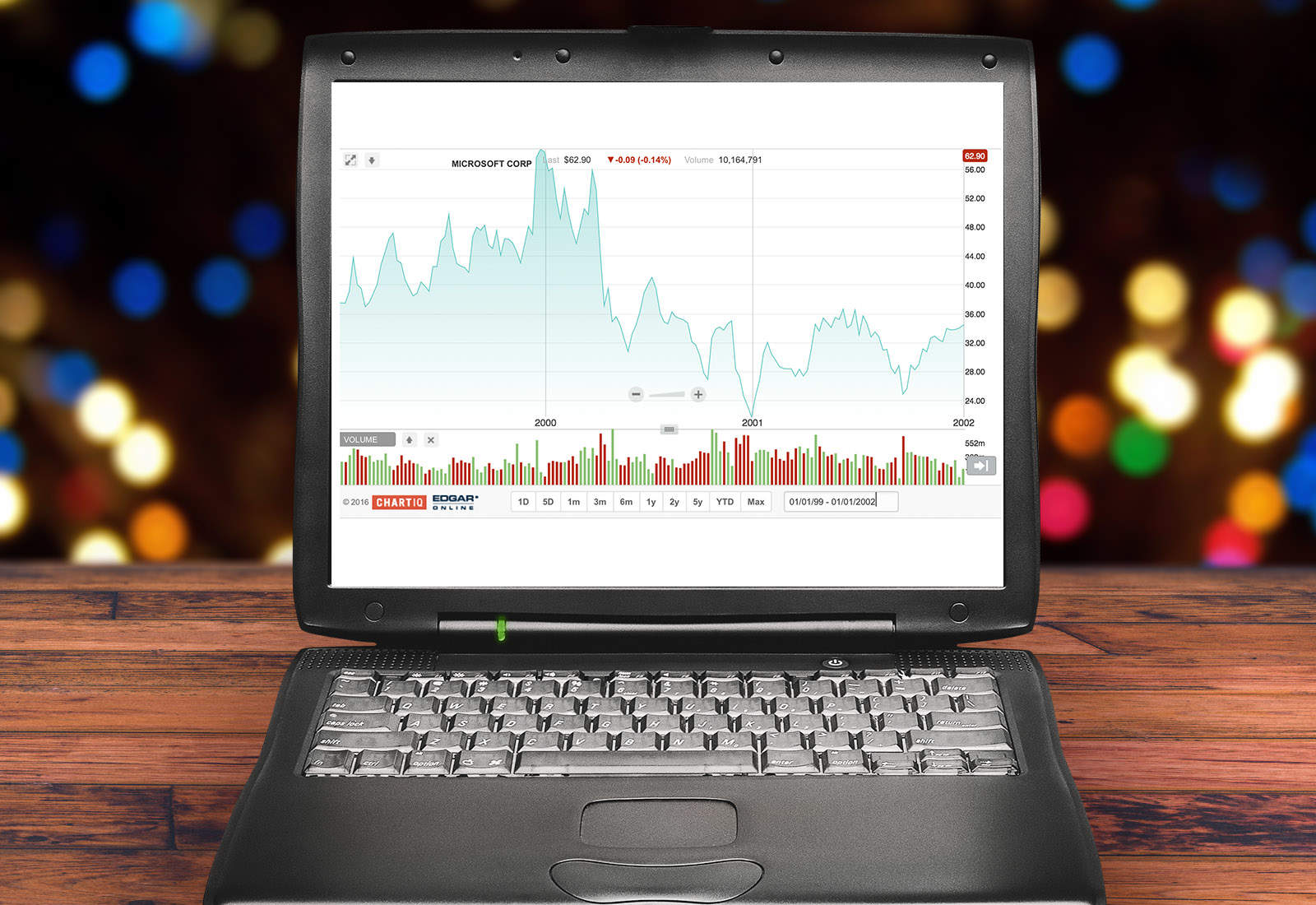 December 30, 1999: Microsoft hits the height of its 1990s dominance and begins its early-2000s decline, clearing a gap at the top for Apple.
December 30, 1999: Microsoft hits the height of its 1990s dominance and begins its early-2000s decline, clearing a gap at the top for Apple.
After hitting an all-time high of $53.60, Microsoft stock starts to fall. Less than a year later, MSFT shares will fall more than 60% in value to $20.
A decade of Microsoft dominance
While I typically focus on Apple (and sometimes NeXT and Pixar) for “Today in Apple history,” it’s worth singling out Microsoft today because of what this date signified about the changing face of tech. In inflation-adjusted dollars, Microsoft’s market cap reached a high of around $850 billion at the time.
It’s tough to think of a company that appeared more unassailable than Microsoft as 2000 approached. And yet, just 15 years earlier, Microsoft had been little more than a successful indie developer for the Mac.
At a time when software could drive computer sales (still true today, but not to the same extent), the tide started to turn following Apple co-founder Steve Jobs’ forced departure from Cupertino. A very bad decision made by Apple helped fuel Microsoft’s success.
Apple signs a deal with the devil
Then-Apple CEO John Sculley signed a deal with Bill Gates to give Microsoft “non-exclusive, worldwide, royalty-free, perpetual, nontransferable license to use [parts of the Mac technology] in present and future software programs” for its fledgling Windows operating system.
Apple’s determination to stick with a proprietary OS while Microsoft licensed Windows to third-party PC-makers set up a rough few years for Cupertino. After disastrous product launches and poor management decisions, Apple fell from power. Meanwhile, Microsoft gradually crept closer to matching what Apple was doing with Mac OS — most notably with Windows 95.
By the time of Jobs’ return to Apple in 1997, Cupertino appeared so far from a contender that Microsoft was willing to bail out the company with a $150 million lifeline as part of a deal involving Internet Explorer. Apple was said to be 90 days away from bankruptcy at that point.
So what changed?
Within weeks of Apple debuting its 1997 “Think Different” ad campaign, marking Jobs’ vision for what Apple needed to represent, the Justice Department sued Microsoft in what became a long-running antitrust case. This wasn’t enough to topple Microsoft by any means. But it did coincide with a leveling off of the company’s influence.
Not long after the December 1999 stock price high (which was aided by the dot-com bubble), Gates stepped down as Microsoft CEO. Steve Ballmer took over the post. Then, as Microsoft struggled to maintain its relevancy in a new century, Apple released hit product after hit product. You know the rest.
In addition to Apple, newer tech giants like Google helped fill the void as Microsoft’s dominance waned. In recent years, Microsoft’s push into cloud computing and its hiring of OpenAI CEO Sam Altman boosted the company’s stock to new highs. However, Microsoft does not possess the kind of world-dominating status it did at the turn of the century.
How do you see things playing out over the next few years? Leave your comments below.


